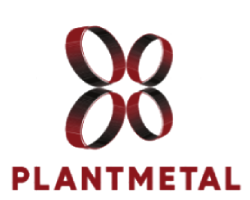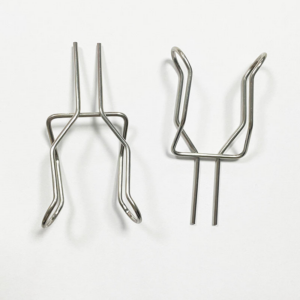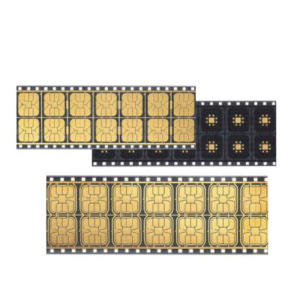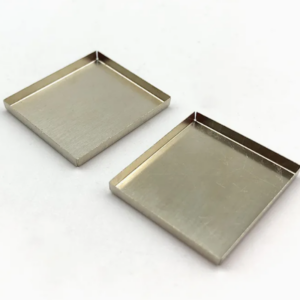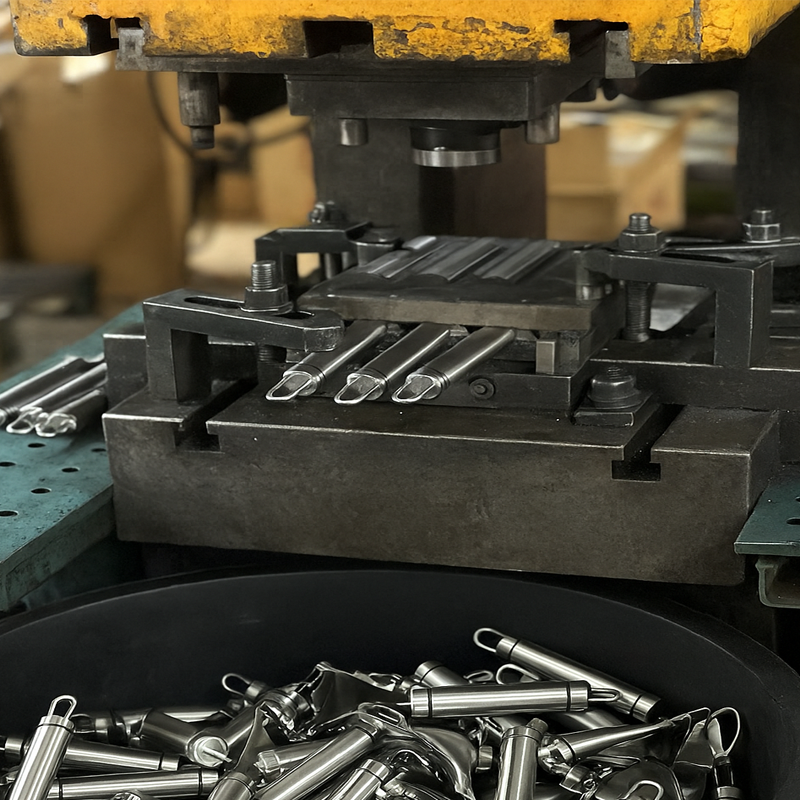Are you searching for a reliable supplier of heavy‑duty corn peelers for your food processing line or retail brand? At Plantmetal, we specialize in OEM service for commercial‑grade corn shuckers engineered for bulk corn processing. In this in‑depth guide, we explore our end‑to‑end manufacturing and customization workflow—from raw material selection through stamping, machining, heat treatment, assembly, surface treatment, quality assurance, and final packaging. We’ll also address the common challenges encountered at each stage and explain how our expertise delivers durable, rustproof steel blades and ergonomic shucker handles that exceed the expectations of food‑service professionals and home cooks alike.
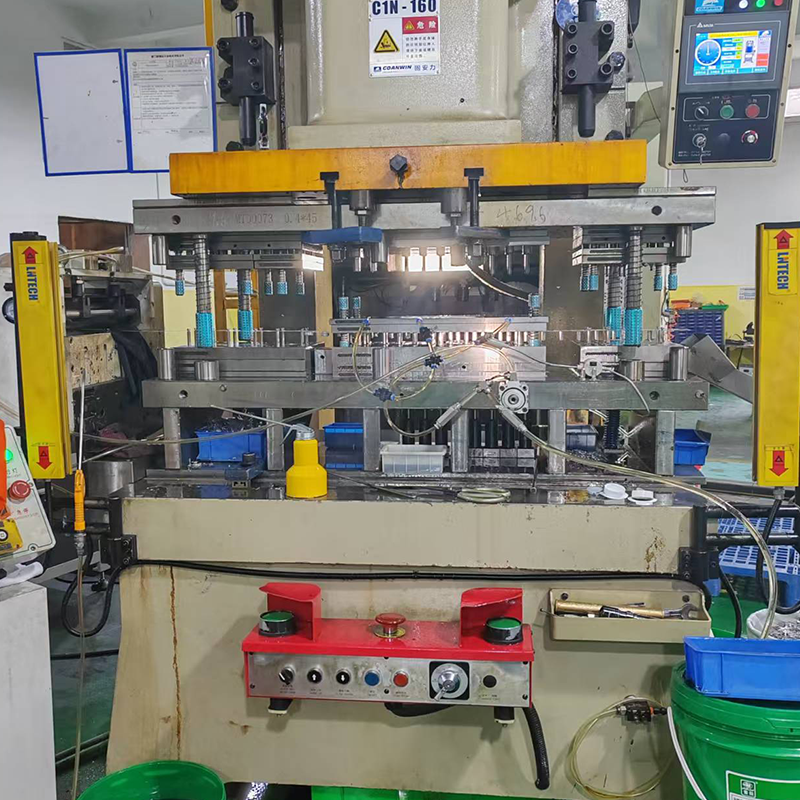
1. Material Selection: Balancing Strength, Sharpness, and Corrosion Resistance
Choosing the Right Steel Alloys
The heart of any corn peeler is its blade. For commercial‑grade performance, we select stainless steels such as AISI 420 (good corrosion resistance, excellent hardenability) or AISI 440A/440C (higher carbon content for longer‑lasting edge retention). These alloys offer:
- Rust Resistance: Essential for contact with moisture and organic acids in food.
- Edge Hardness: Through heat treatment, blades can be hardened to HRC 56–58 for crisp, clean peeling.
- Ductility: Prevents brittle failures under shock loads.
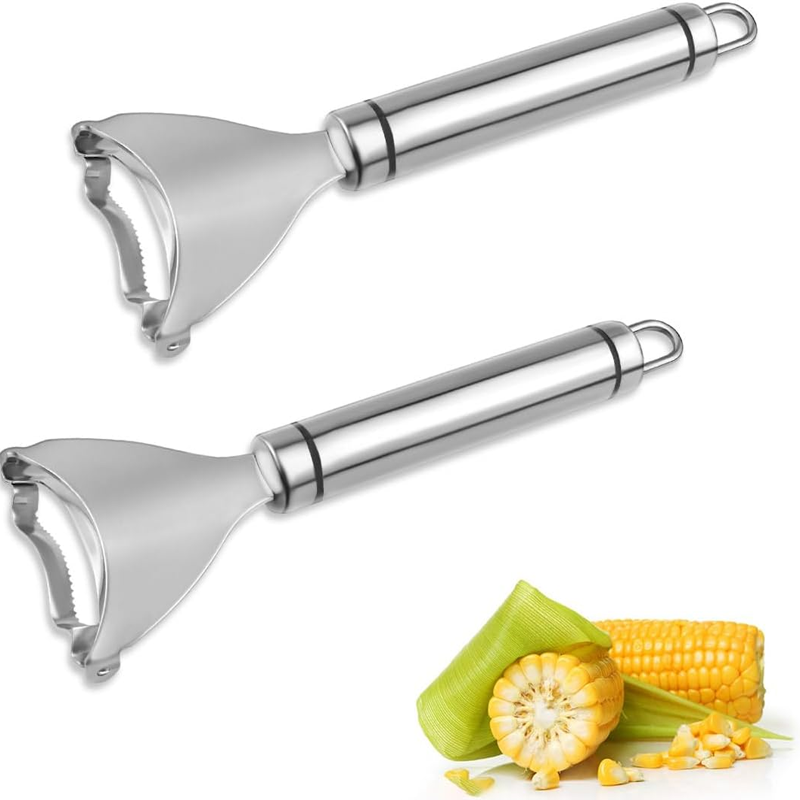
Common Issue: Inconsistent Blade Hardness
Challenge: Variations in steel composition or heat treatment can yield blades that dull prematurely.
Plantmetal’s Solution: We source steels only from ISO‑certified mills and perform incoming small‑batch spectrographic analysis. Each blade undergoes precise salt spray and hardness testing to confirm uniform performance before moving to stamping.
2. Precision Stamping: Forming Blade Blanks and Housing Components
Progressive Die Stamping
We employ multi‑stage progressive stamping to generate the thin, razor‑sharp blade blanks and accompanying metal housings in one continuous operation. Progressive dies perform:
- Blanking: Cutting raw strip steel into defined blade profiles.
- Piercing: Adding mounting holes for pivot pins and handle attachment.
- Forming: Bending base flanges to lock the blade into its housing.
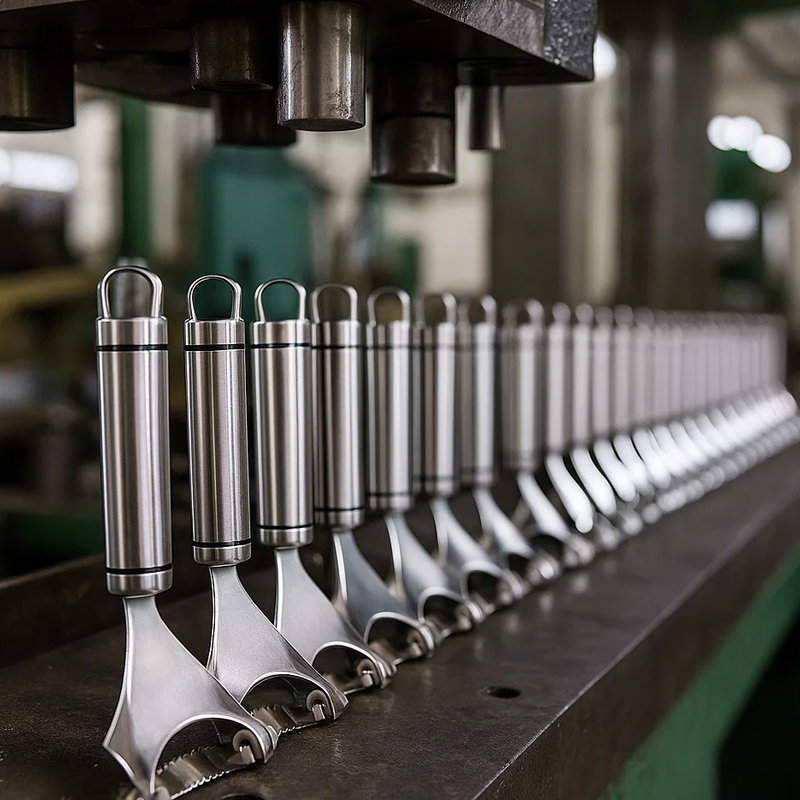
Common Issue: Burr and Flash Accumulation
Challenge: High‑speed stamping can produce burrs that impede sharpness or fit.
Plantmetal’s Solution: We integrate in‑die deburring stations and downstream vibratory tumblers. Automated vision systems inspect each blank for burr size (<0.05 mm) and flash, rejecting any out of tolerance.
3. CNC Machining: Refining Edges and Configuring Critical Features
Blade Grinding and Honing
After stamping, blades proceed to CNC surface grinding centers to:
- Achieve precise bevel angles (typically 20–25°) for optimal shaving action.
- Hone micro‑serrations along the edge to ensure initial grip on the corn kernel surface.
Housing Machining
Stainless steel or aluminum handle inserts undergo CNC turning and milling to drill pivot pin holes and shape ergonomic contours. Tolerances are held within ±0.02 mm for seamless assembly.
Common Issue: Edge Micro‑Cracks
Challenge: Improper grinding parameters can introduce micro‑cracks at the cutting edge.
Plantmetal’s Solution: We optimize wheel grit selection and feed rates, integrating acoustic emission sensors to detect crack initiation. Any suspect blade is automatically flagged for regrind or scrap.

4. Thermal Processing: Hardening and Stress Relief
Precision Heat Treatment
Blades are hardened and tempered in controlled‑atmosphere furnaces:
- Austenitizing at 1020 °C for uniform transformation.
- Quenching in oil or polymer quenchant to achieve the target HRC.
- Tempering at 180–200 °C to balance hardness and toughness.
Common Issue: Warping and Distortion
Challenge: Uneven heating/cooling can warp thin blades.
Plantmetal’s Solution: We employ fixture‑based quench systems that support each blade through the cycle and constantly monitor temperature profiles to ensure uniform transformation with deviations <±2 °C.
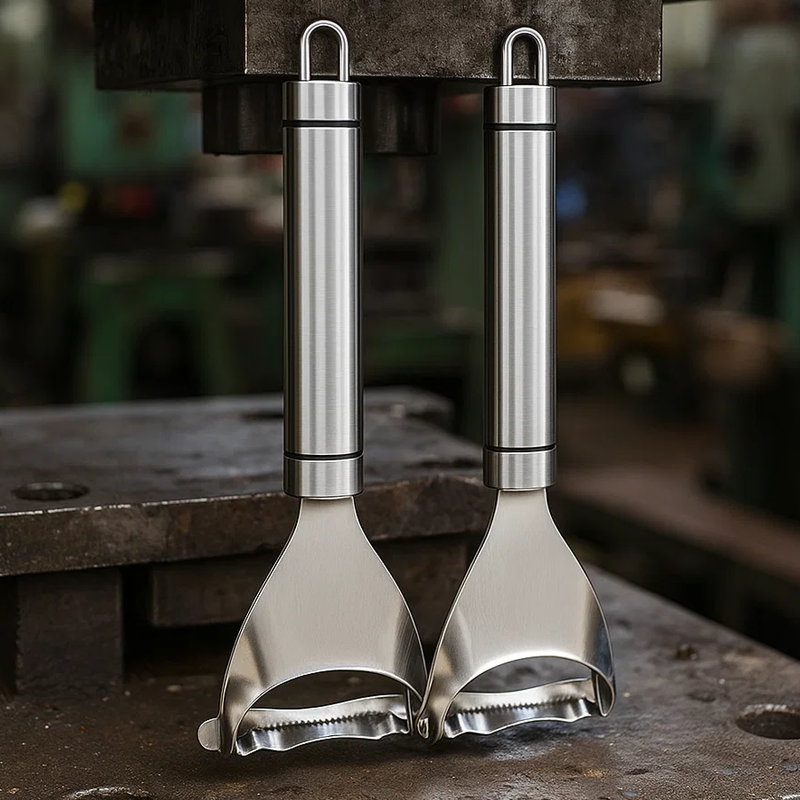
5. Surface Treatment: Enhancing Corrosion Resistance and Aesthetics
Passivation & Electrochemical Finishes
- Chemical Passivation (ASTM A967): Removes free iron and enriches the chromium oxide layer for superior rustproofing.
- Electropolishing: Polishes and smooths microscopic peaks, reducing crevices where bacteria and corrosion begin.
Optional Coatings
- PVD Titanium Nitride (TiN): For premium gold‑tone finish, increased wear resistance, and reduced friction.
- Black Oxide or Powder Coat: For matte finishes and enhanced visual appeal on handles or housing.
Common Issue: Coating Peel‑Off
Challenge: Inadequate surface prep leads to coating failure under repeated wash cycles.
Plantmetal’s Solution: We combine media blasting with controlled surface profilometry (target Ra 0.8–1.2 µm) before coating, ensuring robust adhesion and passing >200 hours of salt spray testing.

6. Assembly & Ergonomics: Hand‑Fitting for Comfort and Control
Secure Bolt‑Together Design
Blades and handle components are assembled using torque‑controlled stainless steel screws or rivets. This bolt‑together approach allows easy disassembly for sharpening and cleaning.
Ergonomic Handle Design
Handles are overmolded with soft‑touch TPE or food‑grade silicone for slip‑resistance and comfort during extended use. Overmolding is performed on integrated injection molding presses, ensuring a leak‑proof bond.
Common Issue: Handle Separation
Challenge: Repeated stress can delaminate overmolded grips.
Plantmetal’s Solution: We use mechanical interlocks (undercut edges) and adhesive primers to enhance polymer‑steel bonding, validated through pull‑off tests >15 N.
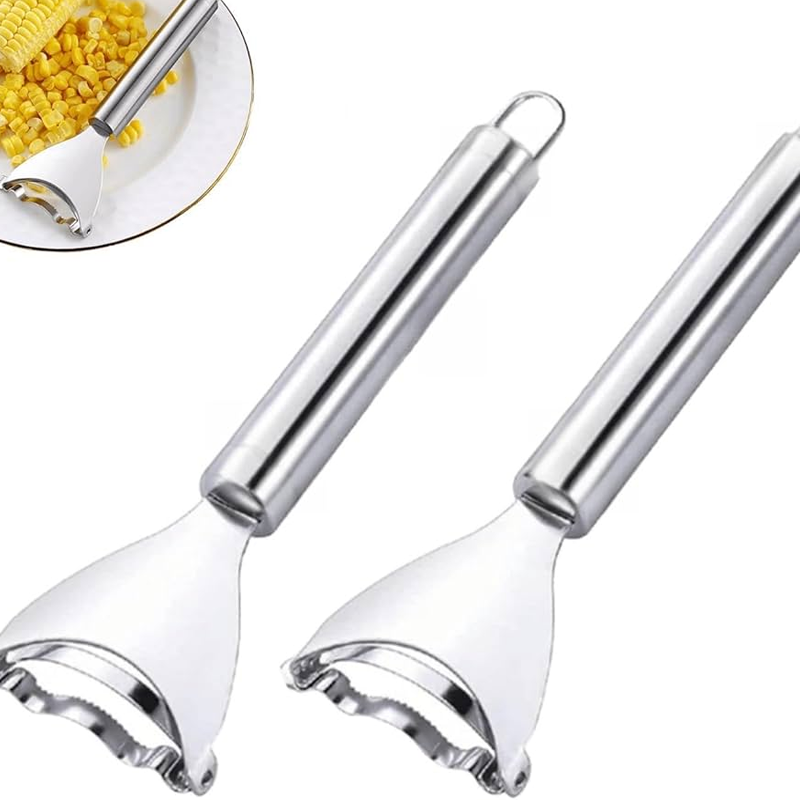
7. Quality Assurance: Guaranteeing Performance and Safety
Inspection & Testing Protocols
- Dimensional Checks: Automated laser scanners verify critical dimensions within ±0.02 mm.
- Cutting Performance: Test rigs simulate 10,000 peeling cycles, ensuring blade retention and edge quality.
- Corrosion Resistance: Accelerated salt spray and humidity tests to IEC 60068 standards.
Our ISO 9001:2015 certification underpins a quality management system that ensures full traceability and continuous improvement.
8. OEM Service & Customization: Tailoring to Your Brand
As an experienced OEM service provider and leading supplier, Plantmetal offers extensive customization options:
- Blade Geometry: Straight, curved, or serrated edges to match corn variety or processing speed.
- Handle Branding: Laser engraving or pad printing of logos, part numbers, or safety instructions.
- Packaging Solutions: Retail blister packs, bulk industrial cartons, or custom printed retail boxes.
- MOQ Flexibility: From small pilot batches (500 units) to large‑scale production (50,000+ units).
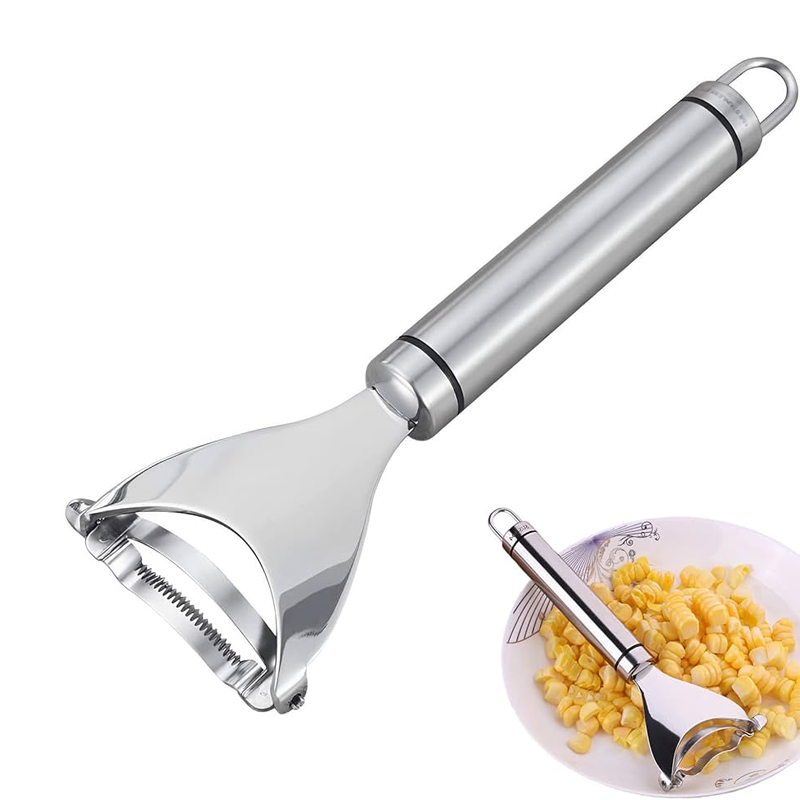
9. Packaging & Logistics: Delivering Worldwide with Care
Protective Packaging
Each corn peeler is individually wrapped in anti‑corrosion paper, then placed in foam inserts within corrugated cartons. Retail packs are sealed in blister or clamshell packaging with custom color inserts.
Global Shipping Expertise
We coordinate FOB, CIF, or DDP shipments via air or sea freight, handling documentation, customs clearance, and ensuring on‑time delivery to your warehouse—be it in North America, Europe, or Southeast Asia.
Conclusion:
Creating a top‑tier metal‑stamped corn peeler requires mastery over materials, stamping technology, precision machining, heat treatment, surface engineering, and ergonomic assembly. At Plantmetal, our integrated manufacturing process and OEM service ensure you receive a product that’s razor‑sharp, rustproof, and built for the rigors of bulk corn processing.
Ready to elevate your kitchenware lineup? Contact Plantmetal today to discuss your specifications, request samples, or schedule a factory tour. Let us show you why leading foodservice brands and retail suppliers trust us for durable, high‑performance corn shuckers that stand the test of time.
